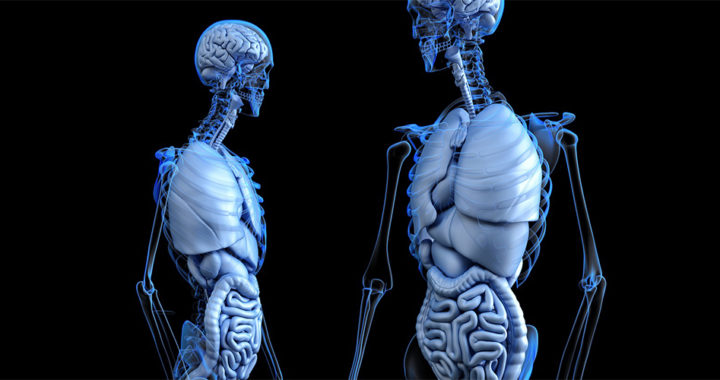Insulin is a peptide hormone produced and secreted by the pancreas, especially the beta cells of the pancreatic islets. The general function or role of insulin is that it effectively and efficiently regulates the metabolism of macronutrients, especially carbohydrates, fats, and protein.
Facts About the Roles of Insulin in the Human Body
1. Metabolism of Macronutrients
Insulin regulates the metabolism of carbohydrates, fats, and proteins as it promotes the absorption of carbohydrates, specifically glucose from the blood into the liver, fat or adipose tissues, and skeletal muscle cells. The absorbed glucose is converted into either glycogen through glycogenesis or triglycerides through lipogenesis. Note than when absorbed in the adipose tissue, glucose is converted into triglycerides. On the other hand, glucose is converted either as glycogen or triglycerides when absorbed in the liver.
2. Controls Blood Sugar Level
The beta cells in the pancreases are sensitive to high glucose or high sugar levels in the blood. High blood sugar level results in the production and secretion of insulin while low blood sugar level results in insulin inhibition. Note that high levels of insulin in the blood inhibit the production and secretion of glucose in the liver. It also induces intake of glucose by fat cells and skeletal muscle cells by causing the insertion of the GLUT4 transporter in the cell membranes.
3. Storage of Energy
Because insulin promotes the absorptions of glucose from the blood into fat or adipose cells, it essentially promotes energy storage. Remember that once absorbed by fat cells, the glucose is synthesized and converted into triglycerides. Triglycerides are the major components of very-low-density lipoprotein and chylomicrons, and they play an important role as energy sources and transporters of dietary fat. Furthermore, they contain more than twice as much energy as carbohydrates.
4. Maintains Amino Acid Uptake
Another function or role of insulin is that it compels cells the absorb of circulating amino acids. A decrease in insulin levels inhibits this absorption. Individuals with low insulin levels have high blood amino acids. Introducing insulin in their systems brings down amino acid levels in the blood to normal values. In other words, insulin promotes the synthesis or metabolism of protein from circulating amino acids.
5. As An Anabolic Hormone
Remember that insulin is an anabolic hormone as well because it promotes the conversion of small molecules in the blood, such as glucose, fats, and amino acids, into large molecules inside cells. Because of this role, insulin also functions by decreasing proteolysis or the breaking down of protein into smaller polypeptides or amino acids, autophagy or the level of degradation of damaged cellular organelles, and lipolysis or breakdown of fats into glycerol and free fatty acids. While insulin promotes the storage of energy as fats into fat tissues, thus leading to fat accumulation in the body, proper weight management through nutrition and physical training can also promote storage of energy as proteins in the muscles, thus leading to muscle growth.
6. Regulation of Brain Functions
Another role of insulin is that it regulates brain function. Insulin in the brain contributes to the regulation of cognition and memory while providing neurotropic, neuromodulatory, and neuroprotective effects. Irregular levels and activities of insulin may result not only in type 1 diabetes, as well as insulin resistance and type 2 diabetes but also in the development of memory and cognitive problems. Take note that there is a close association between type 2 diabetes and Alzheimer’s disease. It is also important to note that because the brain is strictly dependent on glucose while other organs can use fats and proteins as their energy source, the glucose-regulating effects of insulin is essential in maintaining healthy brain functions.
FURTHER READINGS AND REFERENCES
- Blázquez, E., Velázquez, E., Hurtado-Carneiro, V., and Ruiz-Albusac, J. M. 2014. “Insulin in the Brain: Its Pathophysiological Implications for States Related with Central Insulin Resistance, Type 2 Diabetes, and Alzheimer’s Disease.” Frontiers in Endocrinology. 5. DOI: 10.3389/fendo.2014.00161
- Gray, S. M., Meijer, R. I., and Barrett, E. J. 2014. “Insulin Regulates Brain Function, But How Does It Get There?” Diabetes. 63(12): 3992-3997. DOI: 10.2337/db14-0340
- Lotspeich, W. D. 1949. “The Role of Insulin in the Metabolism of Amino Acids.” Journal of Biological Chemistry. 179: 175-180. Available online
- Lukens, F. D. W. 1964. “Insulin and Protein Metabolism.” Diabetes. 13(5): 451-461. DOI: 10.2337/diab.13.5.451
- Wilcox, G. 2005. “Insulin and Insulin Resistance.” The Clinical Biochemist Reviews. 26(2): 19-39. PMCID: PMC1204764
